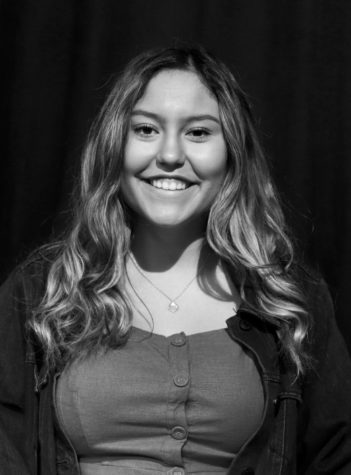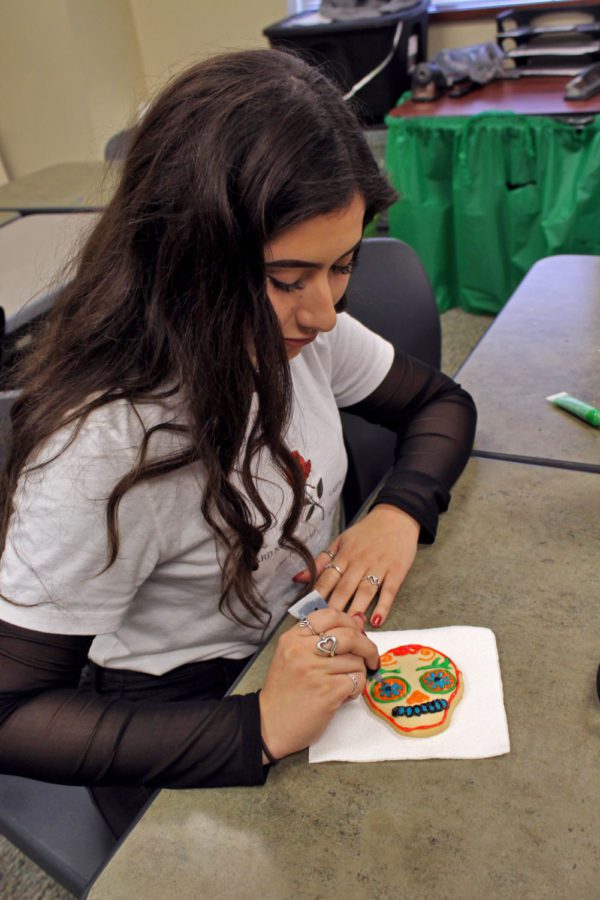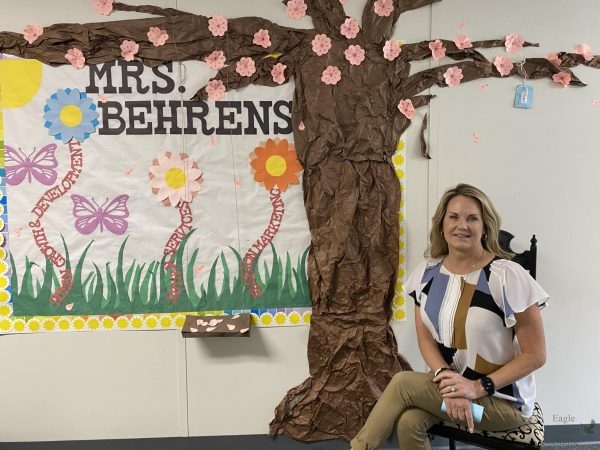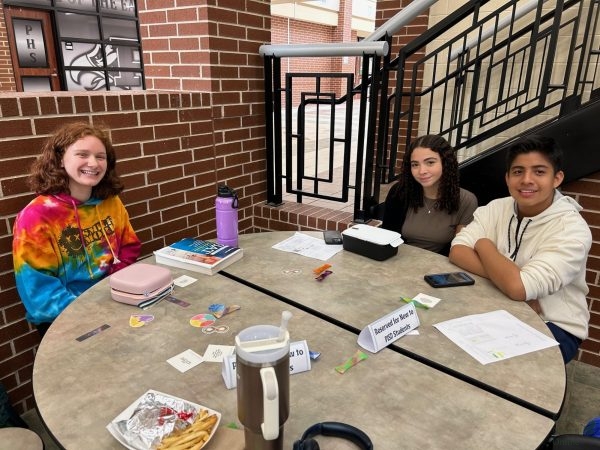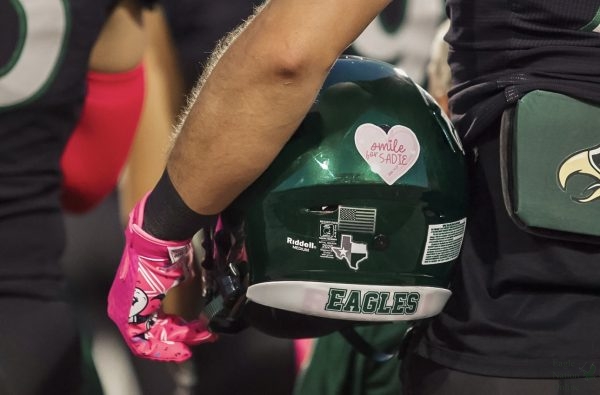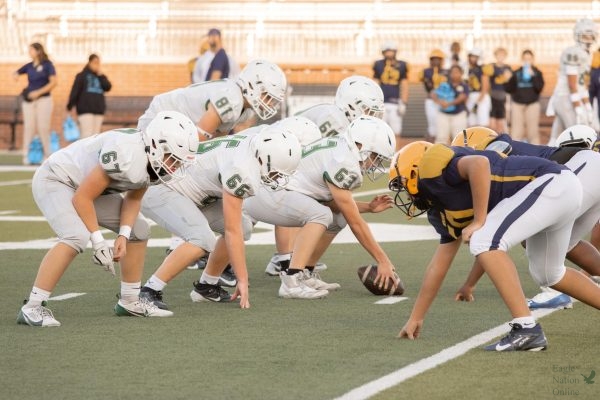Students, teachers celebrate their heritage through ‘Day of the Dead’
Michelle Morales decorates a cookie inspired by a traditional Mexican skull. The Hispanic community celebrated “Day of the Dead” Nov. 2. “You come together with your family,” Spanish teacher Francisco Salas said. “It’s an awesome week of remembering who they were or all the good things you did together.”
Mexico – along with Prosper’s Hispanic community – celebrated ‘El Día de Los Muertos’ Oct. 31 – Nov. 2.
“I think it’s a very unique thing,” Spanish teacher Francisco Salas said. “We grow up knowing and treating death as something that’s not a bad thing, and we talk about it openly. Just remembering what your loved ones did or how they were is awesome.”
Students in all Spanish levels learned about the different aspects of the holiday throughout the week, while Spanish Club and National Spanish Honor Society helped decorate the hallways in skulls, “Papel Picado,” which means traditional paper decorations, flowers and banners.
“Spanish club created offerings to commemorate their loved ones,” Salas said. “We try to inform the kids and just have fun with it. I think everyone has someone that they miss or that they’ve lost, so this is one of those things that you can come together for the same purpose.”
The origins of ‘El Día de Los Muertos’
According to AZCentral.com, the origins of the holiday date back 3,000 years. Each year, the festivities begin Oct. 31 in the central and southern regions of Mexico. The streets fill with people, dressed as ‘Catrinas,’ a typical skeleton dressed in elaborate clothing. Marachi also play traditional songs throughout the night while people put up pictures of their loved ones. Others read short poems dedicated to them, or they decorate their graves. Most put up altars to honor them.
“For ‘El Día de los Muertos,’ we prepared an altar in honor of the family that we’ve had pass away,” senior Michelle Morales said. “We made pan ‘dulce’ (sweet bread) and decorated (the altar) with things that they liked. We put roses, flowers and a representation of all the elements. You also put their favorite foods, but you can’t eat them since it’s meant to be for them.”
Movie shows meaning of holiday
Morales said there had never been a way to represent the holiday in a way that showed every aspect of the culture until Walt Disney Pictures released Coco. The story, inspired by the Mexican holiday, follows Miguel and his journey into the world of the dead as he tries to get back to his normal life before the evening is over.
“I took my parents to see Coco in Spanish,” Salas said.“They loved it because they had never seen that stuff on-screen. It’s awesome to finally have something show exactly what this holiday is. It takes away all the bad notions that it’s a scary holiday.”
Salas said even though there are many ‘El Día de los Muertos’ traditions, the meaning of the day stays the same.
“I get to remember the family members that have passed away and how their spirits stay alive,” Morales said. “And learn how death can be looked at as a beautiful thing, not a sad one.”
Your donation will support the student journalists of Prosper High School. Your contribution will allow us to purchase equipment and cover our annual website hosting costs.
